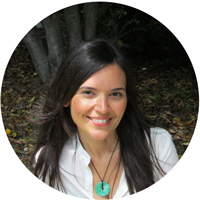
By Krystin Ventura
MCB graduate students Ze Cheng and George Otto are co-lead authors on a new study published in Cell. Their research reports the widespread use of an unconventional mode of gene regulation that employs “transcript toggling” to drive up- and down-regulation of protein levels during meiotic differentiation. Other authors on the paper are Emily Powers (MCB graduate student), Abdurrahman Keskin, Philipp Mertins, Steven Carr, Marko Jovanovic, and Gloria Brar (MCB Assistant Professor).

Since the regulation of gene expression is the universal primary determinant of cellular structure and function, as well as cellular change, studies such as this one are important to define “rules” for how the interplay between mRNA synthesis and translation work. The finding that an unconventional mechanism of gene expression regulation is commonly used in eukaryotes to determine protein levels is both surprising and important for two reasons.
First, this study reveals a strategy by which cells can coordinate up- and down-regulation of different sets of genes to drive, in principle, any type of cellular transition, including cellular differentiation and response of cells to stress. Second, this type of gene regulatory mechanism had been invisible to previous approaches because traditional studies have relied on fitting data to existing canonical models rather than applying unbiased analyses to complex datasets.
The huge amount of global gene expression data now available enables other studies like this one, which give scientists the opportunity to finally test whether our pre-existing broad assumptions about how gene expression works within cells are actually true and universal.
The research team used budding yeast to measure multiple levels of gene expression during meiosis and found that the levels of several hundred mRNAs—or about eight percent of all mRNAs—were anti-correlated with the levels of their corresponding protein products over time. This finding differs from expectations based on traditional gene expression mechanisms, which generally predict that increases in mRNA will result in increases in protein for a given gene.

The regulation ultimately found to be responsible for this surprising observation was first identified as a result of work by MCB graduate students Jingxun Chen and Amy Tresenrider in the lab of MCB Assistant Professor Elçin Ünal and London researchers Minghao Chia and Folkert Van Werven, who collaboratively determined the detailed mechanism by which the use of two differentially translated transcripts drove protein levels during meiosis for the conserved kinetochore protein-encoding gene, NDC80.
Cheng and Otto expanded on this important finding to show that this mechanism is common, regulating nearly 400 genes. They also showed that it allows a single transcription factor to both activate and suppress protein synthesis for different sets of genes in concert through the activation of different types of transcripts: a translatable one, if a given gene product is useful for the next step in the cell's developmental process, or a non-productively translated one if a gene product is no longer needed for subsequent developmental stages. In essence, by this mechanism, protein levels were determined by the translatability, rather than quantity, of mRNA isoforms produced.
"The idea that an increase in mRNA may actually cause a decrease in a protein is counterintuitive based on traditional models for how gene expression works,” said Cheng. “Others have actually already noticed the imperfect correlation between mRNA levels and protein levels in several organisms and conditions. It just hasn't been clear how to generally explain this mechanistically and I think this is where our work is exciting.”
This research also implies that some previous studies which have used the sheer abundance of mRNA as a proxy for protein levels may have inadvertently generated incomplete or misleading conclusions.
 From left to right: MCB graduate students Ze Cheng, George Otto, and Emily Powers.
From left to right: MCB graduate students Ze Cheng, George Otto, and Emily Powers.
"In research we are always addressing new questions to the best of our ability, based off our current knowledge and the accessible techniques at the time of the study,” said Powers. “Now that we know this type of regulation is prevalent, it will be important for research to revisit these previously described gene regulation models and confirm that we have the whole picture or to further define what had been previously overlooked."
"We certainly don't mean to claim that everything you thought you knew about gene regulation is wrong,” added Otto. “But I think it's easy to assume that if transcription of a gene goes up that protein also goes up. Our work is a good reminder that this is not always true and that it's important to do additional experiments to confirm protein-level changes.”
While this new research into transcript toggling answers some questions about mismatches between mRNA and protein levels, it also prompts many new questions and hypotheses in the field of cell development. Researchers in the Brar and Ünal labs are interested in understanding how the entire regulatory mechanism functions, because while key features have been identified and defined, the mechanism still includes many aspects that remain mysterious. These researchers are also interested in finding if this mechanism exists widely in other organisms and if it is employed in other developmental processes.
This is the first publication of both Otto and Powers’ graduate work. Powers has an interest in studying translational control of a particular gene during meiosis, so this project was right in line with her expectations when she first entered graduate school. Otto, who has worked on the project for about a year, says that he didn’t foresee working on this type of project, but is very happy with how his graduate experience has turned out so far. “I’m especially interested in how gene regulation drives changes in cell state and function, so in a way this is sort of a dream project,” he said.
Cheng, who had been working on this endeavor since 2015, has also published in Development since starting graduate school. Unlike Powers and Otto, his initial interests did not intersect much with the work involved in this project. Cheng didn’t have much experience with genome-wide research at the start of graduate school, and expected to study individual genes on much smaller scales. However, after rotating in the Brar lab, “I experienced the power of modern sequencing-based approaches such as ribosome profiling and mRNA sequencing and was amazed by the ability of genome-wide datasets to unveil gene expression patterns that cannot be seen via small scale experiments,” said Cheng.
Cheng, Otto, and Powers all indicated that collaboration, communication within the lab, and Brar’s leadership were key to the success of their research. The project was executed in collaboration with the lab of Marko Jovanovic of Columbia University and researchers from the Broad Institute of MIT and Harvard.
Photo credits: Mark Joseph Hanson, Brian Castellano, Ross Pedersen, Tim Turkalo, and Adriana Koek.